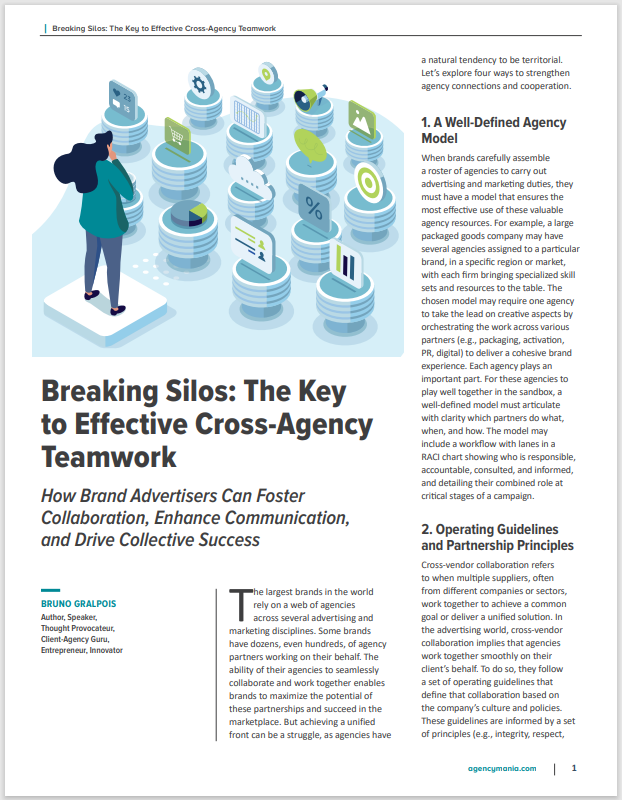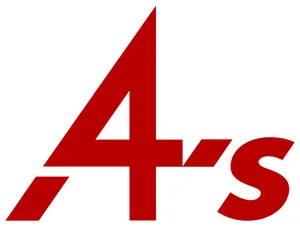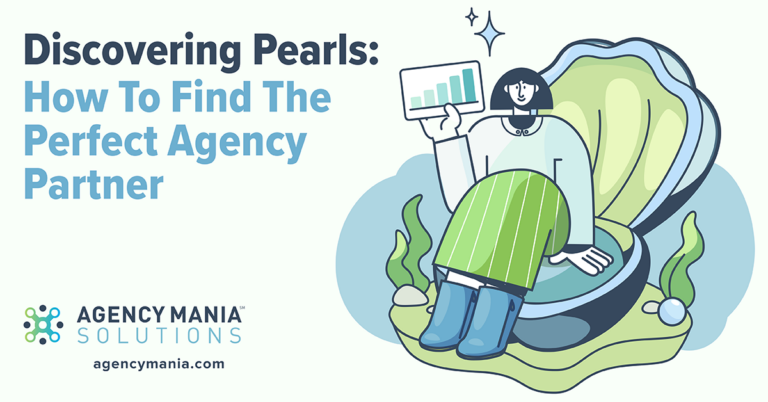How Brand Advertisers Can Foster Collaboration, Enhance Communication, and Drive Collective Success!
The largest brands in the world rely on a web of agencies across several advertising and marketing disciplines. Some brands have dozens, even hundreds, of agency partners working on their behalf. The ability of their agencies to seamlessly collaborate and work together enables brands to maximize the potential of these partnerships and succeed in the marketplace. But achieving a unified front can be a struggle, as agencies have a natural tendency to be territorial.
Let’s explore four ways to strengthen agency connections and cooperation.
1. A Well-Defined Agency Model
When brands carefully assemble a roster of agencies to carry out advertising and marketing duties, they must have a model that ensures the most effective use of these valuable agency resources. For example, a large packaged goods company may have several agencies assigned to a particular brand, in a specific region or market, with each firm bringing specialized skill sets and resources to the table. The chosen model may require one agency to take the lead on creative aspects by orchestrating the work across various partners (e.g., packaging, activation, PR, digital) to deliver a cohesive brand experience. Each agency plays an important part. For these agencies to play well together in the sandbox, a well-defined model must articulate with clarity which partners do what, when, and how. The model may include a workflow with lanes in a RACI chart showing who is responsible, accountable, consulted, and informed, and detailing their combined role at critical stages of a campaign.
2. Operating Guidelines and Partnership Principles
Cross-vendor collaboration refers to when multiple suppliers, often from different companies or sectors, work together to achieve a common goal or deliver a unified solution. In the advertising world, cross-vendor collaboration implies that agencies work together smoothly on their client’s behalf. To do so, they follow a set of operating guidelines that define that collaboration based on the company’s culture and policies. These guidelines are informed by a set of principles (e.g., integrity, respect, cooperation, accountability, innovation, continuous improvement, excellence) that defines how partnerships come to life. It may include topics such as how the agency partners will:
• Communicate to align on goals or expectations
• Avoid misunderstandings
• Quickly resolve issues or misalignment
• Establish transparent practices among themselves
• Use systems and tools to cooperate
• Share data or information with one another
• Report on their progress
3. Shared Key Performance Indicators (KPIs)
Shared KPIs are essential in fostering effective cross-agency collaboration because they provide a common framework for measuring success and align all parties toward the same goals. When agencies collaborate, each may have different priorities or approaches, which can lead to confusion or misalignment. KPIs not only offer transparency, but they also build mutual accountability—each agency is aware of their role in achieving the ultimate outcome. KPIs also strengthen decision-making because all the agencies will have a strong sense of what collective success means. Their individual performance (based on the type of work they do) matters, of course, but their group performance is far more important. Many brand advertisers use a sort of agency scorecard to measure joint and individual performance.
4. Cross-Agency Collaboration Surveys
Most brand advertisers conduct annual or semiannual client–agency assessments. The surveys are designed to identify areas for improvement in the relationships and to strengthen client–agency partnerships. In such evaluations, clients provide feedback to their agencies on several fronts, including creativity, innovation, process rigor, communication, and transparency. Agencies, in turn, provide feedback to the client on topics such as business guidance, budgeting, and effective decision-making. They also might provide feedback on other agencies, so the client can assess whether all their partners are playing fair and doing their best to support each other on the client’s behalf. Potential survey questions: Is agency X open to new ideas and innovative approaches? Do they openly share data, information, concerns, or risks? Are they transparent about their progress and challenges? Is the process for resolving issues that arise during collaboration working? How do they handle unexpected changes or challenges? Are they willing to adapt and adjust? Are communication barriers affecting collaboration? Are improvements or support needed to enhance agency collaboration moving forward?
The Art of Collaboration: Strengthening Agency Connections
The interdependency among roster agencies is the result of a fragmentation of agency capabilities. When brand advertisers rely on multiple agencies, strengthening agency connections involves more than just coordinating tasks or projects—it’s about building strong cross-agency relationships that foster transparency, trust, communication, and joint success. It’s about nurturing a culture of teamwork. It’s about setting aside individual agendas to focus on what the client needs to thrive. By leveraging complementary forces, brands can reduce costs and improve efficiency by combining their agencies’ individual capabilities. Cross-agency collaboration is the art of carefully blending strengths and resources to create something greater than the sum of its parts.

Author, Speaker, Thought Provocateur, Client-Agency Guru, Entrepreneur, Innovator










